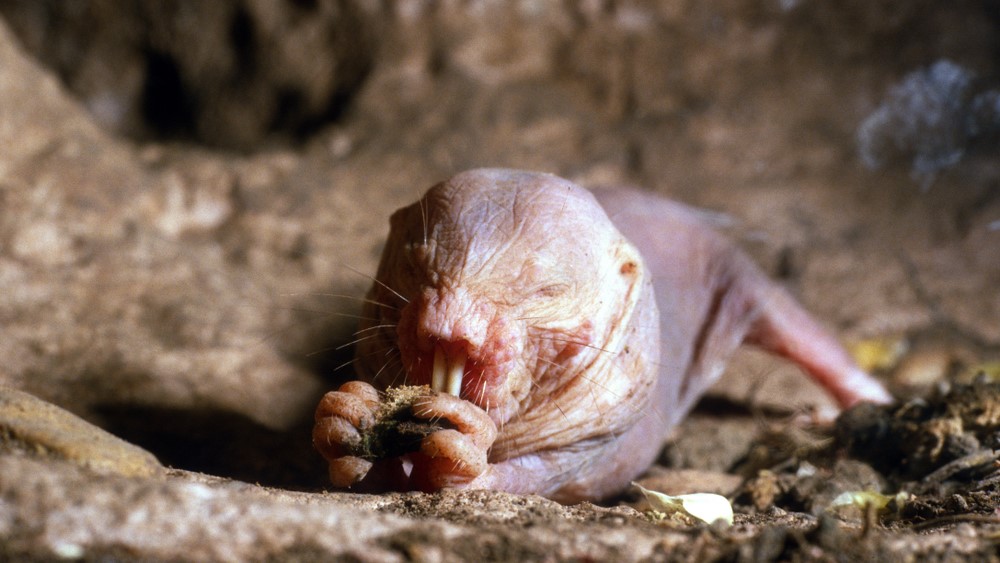Naked mole-rats 'never stop having babies.' Now we know why.
Most female mammals have a finite number of egg cells and become less fertile with age, but naked mole-rats seem to be eternally fertile. Now, researchers think they've cracked how these weird mammals do it.
Naked mole-rats are among the strangest mammals on the planet. Not only do they live longer than any other rodent ‒ up to 37 years ‒ they can also have babies well into old age. Now, scientists think they’ve worked out how: The remarkable rodents’ secret is that they never run out of egg cells.
A new study, published today (Feb. 21) in the journal Nature Communications, investigated how naked mole-rats (Heterocephalus glaber) stay fertile, and the findings challenge the belief that mammals have a limited reserve of egg cells, established before or shortly after birth, and not replenished thereafter.
"Naked mole-rats are the weirdest mammals," lead author Miguel Brieño-Enríquez, an assistant professor at Magee-Womens Research Institute and the University of Pittsburgh School of Medicine's Department of Obstetrics, Gynecology and Reproductive Sciences, said in a statement. "They're the longest-lived rodent, they almost never get cancer, they don't feel pain like other mammals, they live in underground colonies, and only the queen can have babies. But to me, the most amazing thing is that they never stop having babies."
These hairless, burrowing creatures don’t experience a drop in fertility as they get older, unlike most other mammals. But until now, scientists had no idea how.
Related: We expel carbon dioxide as waste. Naked mole rats bathe their brains in it to prevent seizures.
In the study, researchers compared the number of egg cells and death rate of these cells in mice and naked mole-rats at different stages of development.
Most female mammals, including mice and humans, are born with a finite reserve of egg cells, which are naturally depleted over time.
Get the world’s most fascinating discoveries delivered straight to your inbox.
But the scientists found that this is not the case with naked mole-rats. It turns out that naked mole-rat females are born without egg cells and produce an exceptionally large number of them relative to their body size as pups. As well as lasting longer than in mice, this ovarian reserve is replenished throughout the rodents' life. The researchers spotted signs of egg cells being produced in individuals up to 10 years old.
"This finding is extraordinary," senior author Dr. Ned Place, a professor at the Cornell University College of Veterinary Medicine, said in the statement. "It challenges the dogma that was established nearly 70 years ago, which stated female mammals are endowed with a finite number of eggs before or shortly after birth, without any additions being made to the ovarian reserve thereafter."
As well as adding to the naked mole-rat's long list of quirks, the researchers think these findings could lead to new therapies for humans.
Naked mole-rats live in large colonies where only one dominant female can breed. When she is displaced or dies, subordinate females compete to become reproductively active. "Any girl can become a queen," said Brieño-Enríquez.
To find out more about the transition from subordinate female to queen, the scientists removed non-breeding females from the colony. In the absence of a queen, precursor egg cells in their ovaries started dividing — a sign of these females becoming reproductively active.
“This is important because if we can figure out how they’re able to do this, we might be able to develop new drug targets or techniques to help human health,” said Brieño-Enríquez. "Even though humans are living longer, menopause still happens at the same age. We hope to use what we are learning from the naked mole-rat to protect ovary function later in life and prolong fertility."
Editor's note: Updated at 12:25 p.m. EST to note that the study was published on Feb. 21, not Feb. 23 as was previously stated.

Sascha is a U.K.-based staff writer at Live Science. She holds a bachelor’s degree in biology from the University of Southampton in England and a master’s degree in science communication from Imperial College London. Her work has appeared in The Guardian and the health website Zoe. Besides writing, she enjoys playing tennis, bread-making and browsing second-hand shops for hidden gems.

